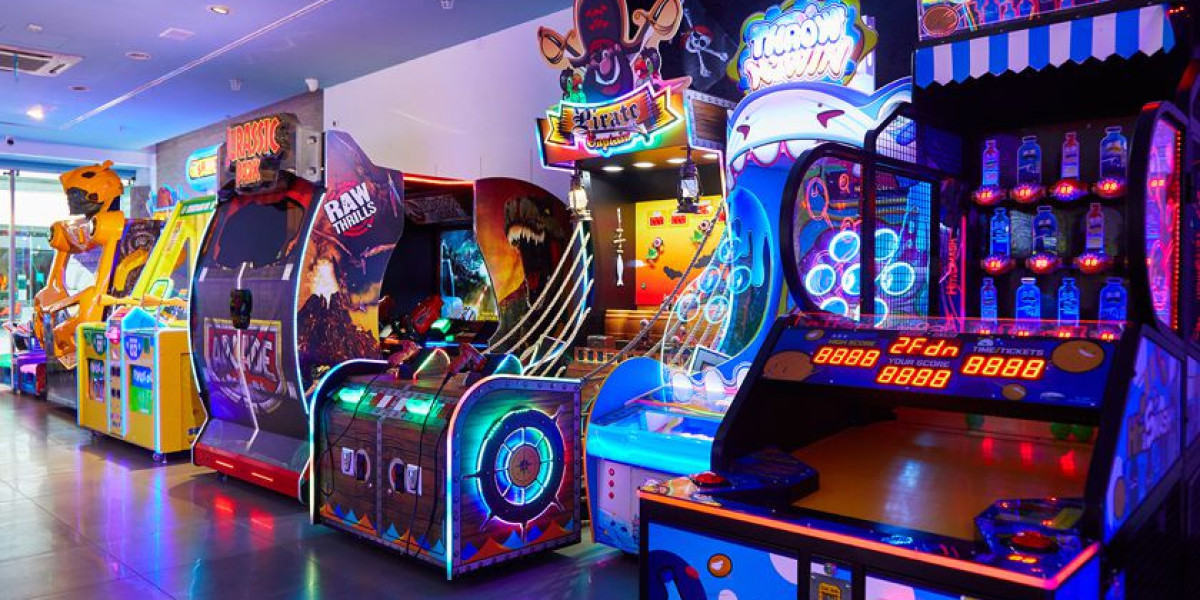Few experiences in gaming history evoke the same sense of joy and excitement as arcade games. From the clinking of coins to the analog glow of a Pac-Man or Galaga screen, arcades have cemented themselves as both an entertainment staple and a cultural phenomenon. While they may conjure images of the past, arcade games remain as relevant as ever, bridging generations with their nostalgic charm and continued evolution.
A Glimpse Into the Golden Age of Arcade Games
The story of arcade games begins in the 1970s, a time when technology was crossing new frontiers in interactivity. Titles like Pong debuted in small venues, offering an incredibly simple yet addictive experience. It was here that the blueprint for modern gaming was laid out. But the golden age really took off in the late 1970s and early 1980s, ushering in a wave of cultural milestones.
Games like Space Invaders, Pac-Man, and Donkey Kong became household names, not just for their gameplay but for the vibrant arcades they populated. These spaces became social hubs, where people of all ages competed for high scores and bragging rights. Crowds gathered to watch the best players, cheering as they navigated increasingly challenging levels. For millions, arcade games were more than entertainment; they were a shared experience that shaped friendships and rivalries.
By the mid-1980s, arcade gaming had transformed into a billion-dollar industry, influencing pop culture through music, fashion, and movies. Retro classics like Tron and Wargames portrayed these games as a symbol of technological wonder and artistic ingenuity.
The Decline and Resilience of Arcades
However, no golden age lasts forever. By the early 1990s, the popularity of arcade games faced a significant challenge with the rise of home gaming consoles. Systems like the Nintendo Entertainment System (NES) and Sega Genesis allowed gamers to experience complex titles from the comfort of their homes, at a fraction of the cost over time. This shift in consumer behavior led to the gradual closure of arcades everywhere.
Yet, arcades didn’t vanish entirely. Instead, they evolved. The 1990s introduced games like Dance Dance Revolution and Time Crisis, offering interactive experiences beyond what standard consoles could provide. These titles gave players a reason to leave home and revisit the arcade, showcasing how innovative game design could adapt even during challenging times.
Nostalgia’s Role in the Modern-Day Comeback
Today, arcade games are enjoying a powerful resurgence. Nostalgia plays a key role in this revival, as older generations look back fondly on the sights and sounds of the arcade era. Bars and entertainment spaces have embraced this sense of retro charm, opening arcade bars filled with vintage machines. These venues offer a blend of classic gameplay and modern socializing, proving that the appeal of arcades goes far beyond gaming.
Furthermore, this comeback coincides with the retrogaming movement, which has fueled interest in iconic titles from decades past. Companies are tapping into this demand by re-releasing classics through mini arcade cabinets, plug-and-play systems, and digital downloads. Newcomers can experience the legends of yesteryear alongside veteran players who remember their heyday.
The Eternal Appeal of Arcade Games
What makes arcade games so enduring? Part of their magic lies in their accessibility. Unlike console or PC titles, which can involve steep learning curves or complex controllers, classic arcade games are designed for immediate engagement. A joystick and a few buttons are all it takes to enter these worlds, whether you're navigating a yellow circle through a maze or battling alien invaders.
Another factor is the emphasis on social play. Whether you're teaming up for Teenage Mutant Ninja Turtles or dueling in Street Fighter II, arcade games foster face-to-face interaction in a way that modern online multiplayer doesn’t quite replicate.
Lastly, the aesthetics of arcade gaming remain uniquely captivating. The pixel art, catchy sound effects, and immersive cabinet designs create an experience that taps directly into our emotions. Even decades later, there’s something irresistible about hearing the jingle of a retro title spring to life.
Innovations and the Future of Arcades
Modern arcade experiences are also pushing boundaries. From VR-powered gaming pods to massive multiplayer experiences in arcade-style settings, innovation continues to breathe new life into the scene. Events like arcade tournaments and retro gaming conventions have given younger generations a chance to partake in this rich history while inspiring designers to create fresh, nostalgia-driven experiences.
On top of that, indie game creators have begun designing arcade-inspired games for mobile devices and platforms like the Nintendo Switch. These modern titles often blend simple controls with fast-paced action, capturing the old magic and adapting it to our current lifestyles.
Why Arcade Games Matter
Arcade games are more than just relics of a bygone era. They represent creativity, community, and the universal appeal of fun. Through decades of change, they’ve adapted, persisted, and influenced countless innovations in the broader gaming industry.
New York Style Pizza Near Me Whether you’re a seasoned gamer or someone looking for a slice of nostalgia, arcade games hold something special for everyone. They remind us that while technology advances, the simple joy of competition and connectivity through gaming remains timeless.
Arcades may have begun as small dimly-lit rooms, but their impact continues to shine brightly, proving that the spirit of these games will never truly fade.



